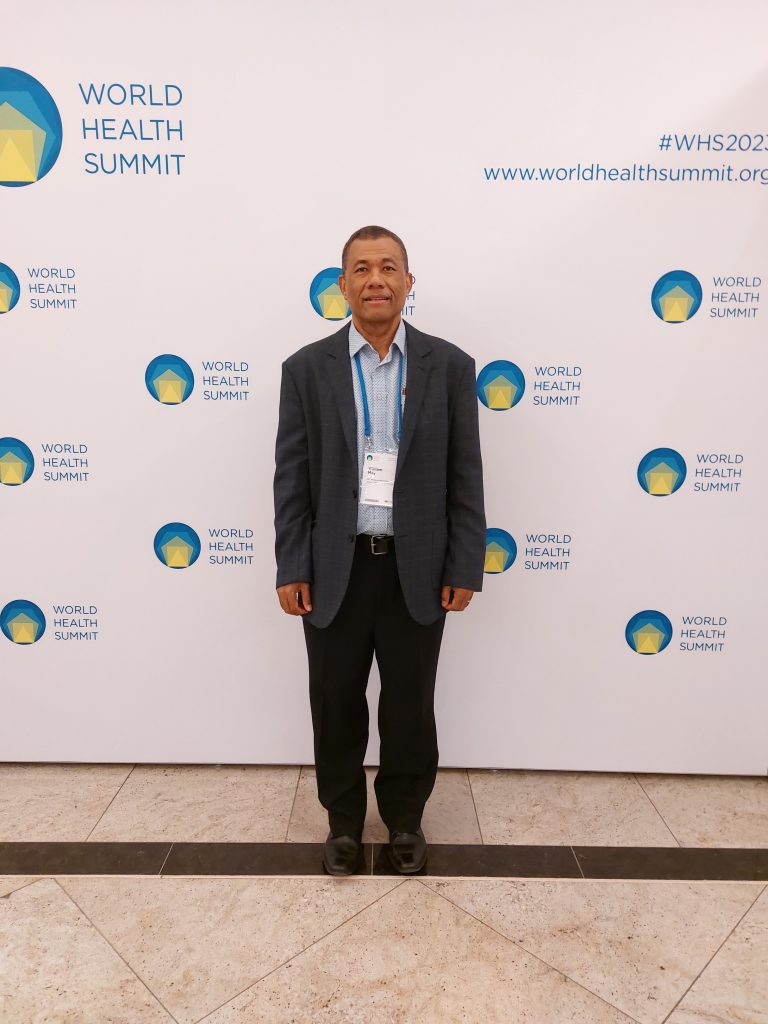

Dr William May at the World Health Summit.
The Fiji National University’s (FNU), College of Medicine, Nursing, and Health Sciences (CMNHS) plays a crucial role in producing qualified nurses to serve the people of Fiji in various hospitals and health centers across the country.
On an annual basis, the college graduates an average of 130 registered nurses and 30–40 enrolled nurses. The University’s effort is aimed at meeting the growing demand for skilled healthcare professionals and contributing to the overall enhancement of the healthcare system in Fiji.
This was highlighted by the CMNHS Dean Dr William May at the World Health Summit in Berlin, Germany, where he presented on the high rate of resignation of nurses in the past five years.
“The production of a substantial number of trained nurses reflects our commitment to bridging the gap in the healthcare workforce and ensuring the delivery of quality healthcare services to the people of Fiji,” Dr May said.
He was invited to speak at one of the sessions on the theme ‘Future-proofing the health workforce in the Asia-Pacific Region’.
“I fully understand the increase in demand by our regional countries for training institutions to respond to each individual country’s workforce training needs. The FNU plays a key role in this regard and has accommodated the country’s needs where resources are allowed,” Dr May said.
“It will take approximately 4.5 years to replace the number of nurses lost last year, or at least five years to replace the number lost in the past three years. It must be emphasised that this is a number replacement only and doesn’t take into consideration the replacement of experience or skill loss.”
“If Fiji sets up additional nursing training institutions or equips existing providers well, it could shorten the workforce gap given that it will take all institutions three years to produce new graduates. In the meantime, it is worth exploring other measures to maintain the number and skills required for the provision of quality services across all health facilities. In my view, this is an area where development funders, stakeholders, and training institutions can assist the country.”
It was revealed that over the past five years, more than 1400 nurses resigned.
“This mass resignation poses a serious threat to the healthcare infrastructure of the nation. Out of the 1400 plus who resigned, 87% resigned in the past three years. Most of Fiji’s nurses resigned last year, equating to about 24% of the total nursing workforce. Similar resignation trends were observed among Allied Health, Dentists, and other Oral health workers.”
Dr May said FNU was the largest trainer of the national and regional health workforce and is producing highly qualified medical graduates to fill in the vacuum left by medical professionals.
“About 75% of the students at CMNHS over the years are females. It will be prudent for future employers to develop attractive work conditions to suit the health workforce of the future and put in place gender-sensitive working environments and benefits for the retention of health workers within the country,” Dr May highlighted.
“In 2012, Pacific Island countries had an average of 3 doctors per 10,000 people, doubling to 6 by 2023, while New Zealand had 35 doctors per 10,000. The region’s doctor count surged by 134% in 2023, with Fiji’s ratio rising from 4.2 in 2012 to 10.3 in 2023, indicating improved health workforce resources.”
Dr May mentioned that some identified contributing factors of health workers leaving were a toxic work environment, leadership problems, low salary, lack of recognition, burnout, and life-work balance issues as key factors prompting nurses and doctors to resign.
“As a practical solution, employers in the region should aim to create and ensure a safe and conducive working environment for their health workers,” Dr May said.
Dr May said the presentation was aimed at bringing the issue to the forefront to enable sustainable practical solutions among all parties engaged in the health sector’s development.